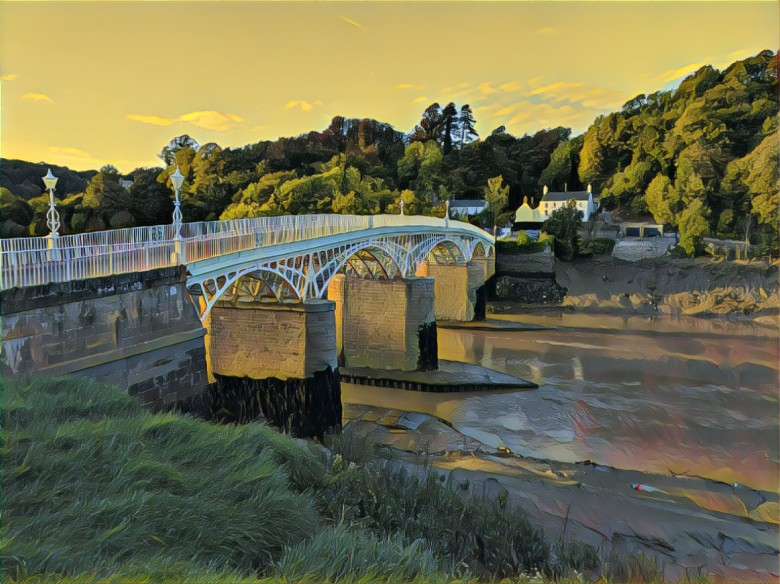One hundred and one uses for a Smartphone
In 2004, when I walked the Pembrokeshire Coast Path, Smartphones, Digital Photography and Social Media were not yet established. So I used my humble Nokia 6310i to keep in touch and a Film Camera with 36 shots on ISO 200 film.
In early 2007, Facebook use for the general public was in its infancy, but I was determined to try and upload pictures of the SWCP walk each evening and found a solution using a Sony Ericsson K750i phone and Flickr. Each photo was uploaded as an email, whose subject line became the title of the photo and the email message became the description. I was very pleased with the results. The photos are still online at www.flickr.com/photos/swcp630
Nowadays this capability is taken for granted and practically everyone owns a Smartphone. Although I keep a personal written journal, my Film Camera is somewhere in the loft and my trusty Google Pixel Phone is my primary camera until a newer model seduces me.
But these clever devices can do so much more in additional to the usual apps.
- Access to notes and itineraries, synchronised with my computer
- All important weather and tide information
- Online banking to manage funds
- Navigational aids – GPS, compass, Backcountry Navigator, Viewranger, Google Maps, MyMaps (all usable in offline mode without a mobile signal)
- Pedometer – I use AccuPedo – my record day is 65,000 steps, now I switch it off knowing I take 2,200 steps per mile on average per day
- Garmin – to sync my daily trip data from my Garmin 520 if cycling
- Photography – no need to carry a separate camera
I’m preaching to the converted. Most people I meet have a much longer list of apps. The point I make is that this is all you need to carry gadget wise. Save weight.
Good days walk, according to Accupedo
So, I highly value my Smartphone when walking and keep it safely tucked up in a waterproof case (Overboard Waterproof Case). Battery life can be extended, by removing any Apps you do not need and placing it in airplane mode during the day. After all who needs interruptions when walking.
I can usually sneak a recharge when having a break in a cafe, and of course overnight if staying indoors, but I managed to make a battery last 4 days, by switching the thing off unless I need to use it for a photograph or for navigation. I use an Anker battery booster for longer remote trips to double that to as much as 8 days.
Mobile signals in remote areas are not to be relied on (unless in Europe I find), but almost all overnight accommodation has WiFi access. Nevertheless, offline mode is very important to prevent excessive battery use while the phone hunts for a 3G or 4G signal.
Photography
My philosophy is to spend money on adventures which present amazing photographic opportunities rather than spend time and money indoors playing with a flashy Digital SLR. Besides, I am not going to carry a couple of kilos of expensive equipment around that can easily be damaged by the elements.
The SWCP was my first step into Digital Photography using a Sony Ericsson K750i phone and Flickr. Each photo was uploaded daily as an email, whose subject line became the title of the photo and the email message became the description. I was very pleased with the results www.flickr.com/photos/swcp630. That phone only had a 2MP camera and weighed 99g.
I now use a Google Pixel Phone, which has an 12MP camera, which can take panoramas, spherical compositions and very acceptable landscape and people photographs. In particular, I have found the HDR mode produces great results as it balances the exposure between the bright sky and landscape. It takes great close-ups too.
Quite a few shots on this website have been taken with previous versions of Google phones – Nexus S, Nexus 4 or Nexus 5X. Only a few have been post-processed or subjected to Google’s Auto Awesomeness.
I have a guilty habit of using Prisma too. An AI processor that creates artwork from photographs. See https://prisma-ai.com/

Plus filters available in Android.
More importantly, I am beginning to understand that photography is not about technology, post processing or equipment, but about the message you want to convey to the audience. I am just at the beginning of this artistic journey and a book that has helped me a great deal is The Art of Photography by Bruce Barnham and also an excellent article by Ken Rockwell at http://www.kenrockwell.com/tech/not-about-your-camera.htm.
I’m no Ansel Adams, but I try my best.








Informasi ini bagus
http://www.esaunggul.ac.id
LikeLike